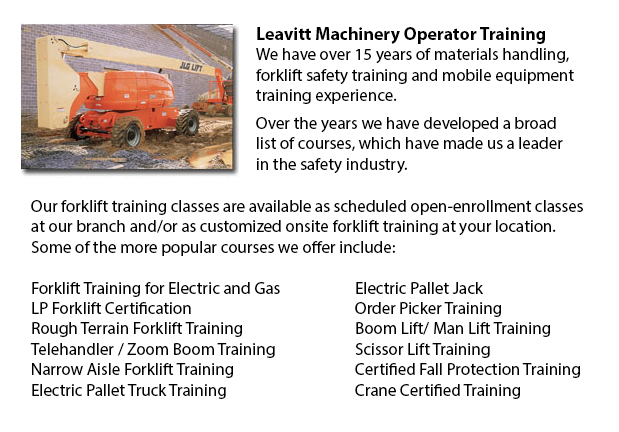
Grande Prairie Aerial Boom Lift Ticket - Aerial forklifts might be used to accomplish a lot of distinctive tasks done in hard to reach aerial places. Many of the duties associated with this style of jack include performing daily preservation on buildings with lofty ceilings, repairing telephone and power lines, raising heavy shelving units, and pruning tree branches. A ladder could also be used for many of the aforementioned projects, although aerial platform lifts provide more security and strength when correctly used.
There are a lot of designs of aerial hoists available on the market depending on what the task required involves. Painters sometimes use scissor aerial hoists for example, which are classified as mobile scaffolding, of use in painting trim and reaching the 2nd story and higher on buildings. The scissor aerial lifts use criss-cross braces to stretch out and extend upwards. There is a table attached to the top of the braces that rises simultaneously as the criss-cross braces elevate.
Container trucks and cherry pickers are another variety of aerial hoist. They contain a bucket platform on top of an elongated arm. As this arm unfolds, the attached platform rises. Forklifts utilize a pronged arm that rises upwards as the handle is moved. Boom lifts have a hydraulic arm which extends outward and raises the platform. Every one of these aerial lifts have need of special training to operate.
Training programs offered through Occupational Safety & Health Association, known also as OSHA, deal with safety methods, machine operation, repair and inspection and machine load capacities. Successful completion of these education courses earns a special certified license. Only properly certified individuals who have OSHA operating licenses should run aerial lifts. The Occupational Safety & Health Organization has developed rules to uphold safety and prevent injury while utilizing aerial hoists. Common sense rules such as not using this apparatus to give rides and making sure all tires on aerial platform lifts are braced in order to hinder machine tipping are observed within the rules.
Sadly, figures reveal that more than 20 aerial hoist operators pass away each year while operating and nearly ten percent of those are commercial painters. The majority of these incidents were brought on by inadequate tie bracing, therefore many of these might have been prevented. Operators should make sure that all wheels are locked and braces as a critical safety precaution to stop the machine from toppling over.
Marking the neighbouring area with obvious markers need to be used to safeguard would-be passers-by so they do not come near the lift. What's more, markings should be placed at about 10 feet of clearance between any electric cables and the aerial lift. Lift operators must at all times be appropriately harnessed to the lift while up in the air.
-
Grande Prairie Overhead Crane Safety Training
Grande Prairie Overhead Crane Safety Training - Overhead crane safety training equips operators with skills and knowledge about crane safety measures, accident avoidance, materials handling, and machine and stock protection. Trainees will learn the k... More -
Grande Prairie Crane License
Grande Prairie Crane License - The crane operator needs to have been certified with a crane operator license or certification. To be able to practice as an operator of a crane, the qualifications are considered mandatory. Obtaining a license includes... More -
Grande Prairie Heavy Equipment Training
Grande Prairie Heavy Equipment Training - The two most common types of heavy equipment training are classed into the categories of machines; equipment which is fashioned with rubber tires or those with tracks. The tracked vehicle are heavy duty machi... More -
Grande Prairie Skid Steer Ticket
Grande Prairie Skid Steer Ticket - On a skid-steer loader, the lift arms are beside the driver along with pivot points at the back of the driver's shoulders. This makes them different compared to a conventional front loader. Because of the operator's... More -
Grande Prairie Zoom Boom Ticket
Grande Prairie Zoom Boom Ticket - Zoom Boom Training is intended to train operators on variable reach forklifts. The objectives of the training are to impart an understanding of the physics of the equipment, and to be able to outline the operator's t... More -
Aerial Lift / Boom Lift / Man Lift / Scissor Lift Certification in Grande Prairie
Scissor lifts are lift truck tables that raise materials and people and supplies vertically. They are usually used in commercial, industrial and construction environments. A common use of scissor hoists is for lifting or lowering construction supplie... More -
Grande Prairie Aerial Lift Safety Training
Grande Prairie Aerial Lift Safety Training - Each and every year, there are roughly 26 construction fatalities due to the utilization of aerial lifts. Most of the craftsmen killed are laborers, electrical workers, ironworkers, carpenters or painters.... More -
Grande Prairie Fall Protection Ticket
Grande Prairie Fall Protection Ticket - The number one reason of death within the construction business come from fall-related incidents. There is more chance for fall accidents depending upon the kinds of work being done in your workplace. Therefore... More

Forklift Certification Grande Prairie
TOLL FREE: 1-888-254-6157
Grande Prairie, Alberta
forkliftcertificationgrandeprairie.com
Email Us
About Us


